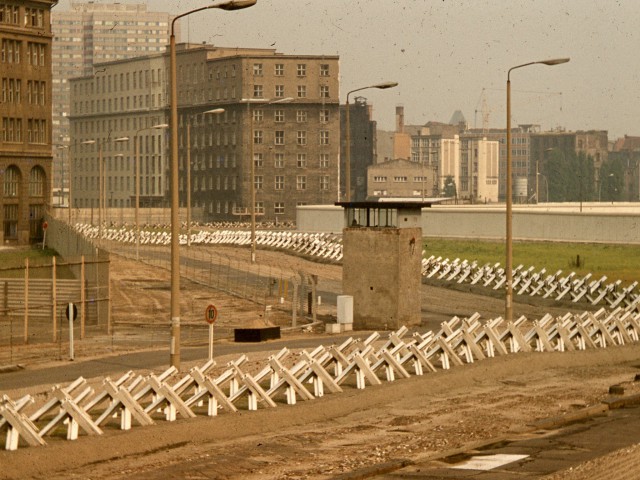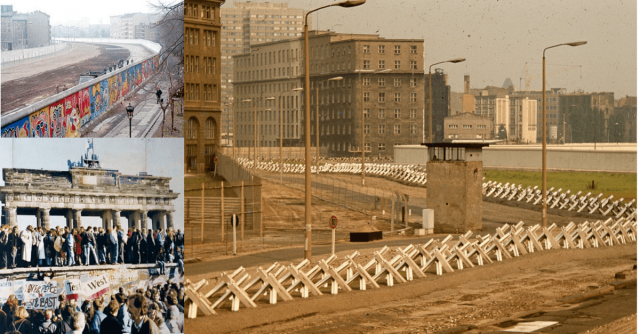Very few symbols were as poignant in the Cold War between West and the Soviet bloc, as the Berlin Wall. A barrier made out of concrete and barbed wire which divided Germany’s largest city for almost 30 years.
While the wounds caused by the Second War began to heal, Germany and Berlin were divided into four zones, each one of them was administered by on of the four victorious Allied powers. Because Berlin is in the eastern half of Germany, the parts of the city administered by England, France and USA were fully surrounded by the Soviets.
The Soviets established a communist puppet state, and sealed the borders to stop the population from migrating to the west.

On August 13th, 1961 the first embodiment of the wall was made out of barbed wire between rows of buildings. It was ultimately consolidated by combining subsidiaries walls, trenches, electric fences and a “death zone” closely supervised by armed guards from the 302 watchtowers that were built. (The concrete panels covered with graffiti can be seen in the most famous photographs of the wall which was built in 1979.)
Once the wall was completed, a zigzag path of 96 miles followed (177.79 kilometers), of which only 27 miles (50 km) divided Eastern Berlin from the west, the rest of the barriers was separating Western Berlin from the rural areas of Eastern Germany.

November 9th, 1989 was that day when the Soviet government and the Eastern Germany government reduced border controls and immediately afterwards the Berliners gathered to destroy the wall. In a few months almost the entire was demolished, except some parts of it which were intended for museums, souvenirs hunters or for garbage dumps.

